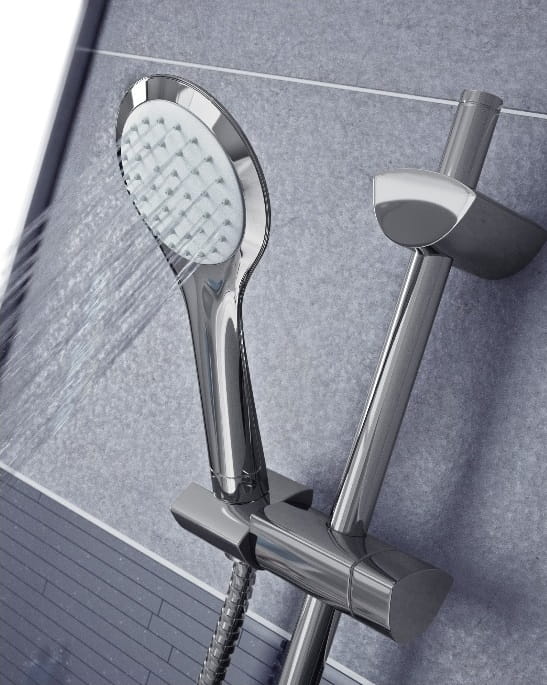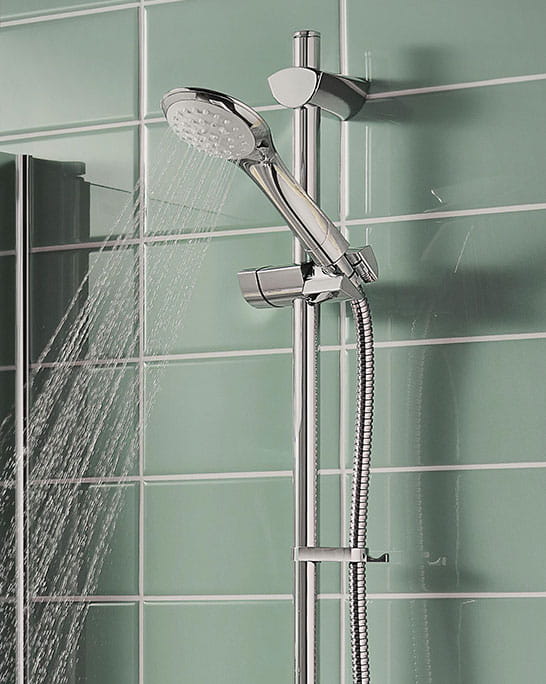On the other hand, water-saving devices may be more expensive than less efficient options. Knowing when to splash out and when to save money can make a huge difference to your water usage – but not always in the way you think.
Lisa Ward, our shower expert, gives us her tips for water-saving devices in the bathroom.
There are many taps and showerheads that claim to be ‘water saving’. What should readers look for specifically if they want to save water?
To begin with, it’s really important to take a considered approach to water saving and understand what it is you want from your tap or shower. It can be all too common, for example, for people to purchase the most sustainable type of say, shower, only to realise that the reduced amount of flow means that they have to spend twice as long in it to effectively get the shampoo out of their hair. Obviously, this defeats the object completely.
The key then is to balance your needs in terms of performance and saving water in the bathroom. With this in mind, many of today’s showers and taps come with optional flow regulators which work by limiting the flow inside the connection. Typically, for example, most standard showers distribute a shower flow rate of 13.5 litres per minute, while flow regulated showers can offer a rate of 10 litres per minute respectively. And, although this can translate to significant water savings over the year, the difference in the shower performance is barely noticeable.
Another good option is a product which has an eco-setting. In this way, you can have a choice when it comes to going into water saving mode; for example you may choose an eco-setting for a quick shower but a normal mode when washing your hair. Generally, however, when it comes to a basin tap you may prefer to use the eco-setting permanently, as most tasks won’t require a high flow.
Aside from the choice of tap or shower, however, it’s also important to instil a behavioural change; all the basics such as turning the taps off when brushing your teeth, not running the shower for ages before getting in, etc. Ultimately, technology can do so much, but the crux of saving water in bathrooms primarily lies with the user.
Why should you invest in quality brassware rather than bagging a bargain? How does investing in quality help to save water in the long run?
The saying ‘you get what you pay for’ does ring true. Although it may be tempting, in most cases the reality is that a really cheap, say, brass tap bought from an unknown business will be of a much lesser quality than that of a reputable brand. Given that a leaky tap or shower can lead to all sorts of problems (as well as not being great for water saving!), it really is a false economy and not worth the risk.
And the good news is that quality brassware which comes with water saving credentials doesn’t have to mean a hefty price tag. At Bristan, for example, all of our ranges, whether at basic or designer level, come with solid, no quibble guarantees and the backing of our customer care. Plus, all products are designed in Great Britain to our exacting standards – for that added peace of mind.
How can readers determine that the brassware they are buying is good quality?
As mentioned, it’s not about spending a fortune but choosing from a well-known company with a good reputation and, ideally, a history in brassware.
For example, having been established for over 40 years, at Bristan we have an acute understanding of everything from the UK’s plumbing systems and property structures through to the latest design trends. In this way, customers can be assured of purchasing a product which not only looks good but can be installed without any hassle, is easy to use and will stand the test of time.
How does replacing a single flush with a dual flush WC save water?
Dual flush WCs have been designed to enable users to reduce waste without restricting use. Typically, a traditional single flush WC will use a generous 9-12 litres per flush; whereas today’s dual options use a maximum of just 6 litres – with some as low as 4-2 litres.
Although not something that necessarily springs to mind when it comes to water saving, the reality is that the toilet is a huge water waster - in fact, according to WaterWise 30% of the water each adult uses daily goes to flushing toilets. As such, making the switch to a modern dual-flush option can make for some serious water savings.
Is there anything readers can do if they don’t wish to replace their WC?
Yes, there are lots of other clever bathroom water saving devices which can make a difference.
A nice little option is a Cistern Displacement Device (CDD), which, as the name would suggest, is placed in the cistern to displace water, and can reduce up to three litres each flush. According to WaterWise this can equate to a saving of 5,000 litres per year.
Finally, it goes without saying, but it’s important not to flush the toilet excessively too. For example, try to avoid flushing cotton balls or makeup tissues down the toilet, but rather put them in the bin.
My boyfriend has a dual flush but it is terrible! What are his options? What should readers look for when buying a dual flush WC?
It could be down to a number of circumstances. If the toilet was bought from a reputable supplier (as is always recommended!) and still within the guarantee period we would, of course, advise that he gets in touch with their customer service team. Alternatively, if not within the guarantee period, it would be best to consult a qualified plumber as it might even be something to do with the installation or plumbing system.
However, as we’ve talked about already, if your boyfriend has gone for the cheapest option from an unheard of brand, a poor performance is, sadly, not uncommon.
Are there any other ways in which readers can save water in the bathroom?
Another good option is a low volume bath. As we all know, the bath is one area of water usage that has frequently come under scrutiny when water saving measures have hit the headlines.
To counter this, bathroom manufacturers have addressed this issue by re-designing baths so that they deliver the bathing experience you’d want while using considerably less water. This is achieved by contouring the internal profile of the bath so that it requires substantially less water to fill up to the overflow – up to a 90 litre saving in some examples. In this way, low volume baths, all of which are designed with the standard external dimensions, make it feasible to replace a standard bath without having to change the rest of the bathroom layout.
 Homeowners
Homeowners
 Installers
Installers
 Merchants
Merchants
 Specifiers
Specifiers

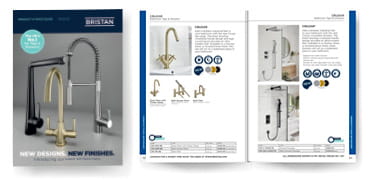
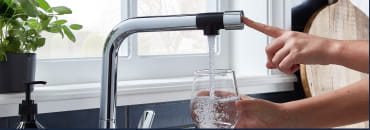
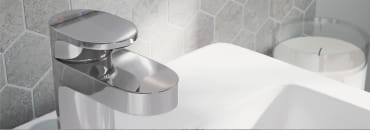
.ashx?h=100%25&w=100%25&hash=852651BC82DFC5AB98121666975352726CC5BBD2)
